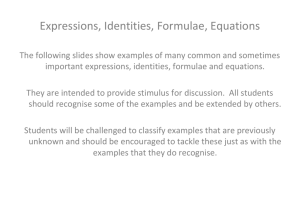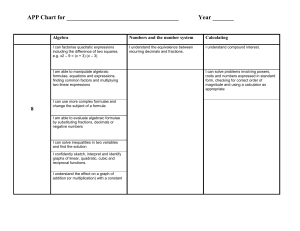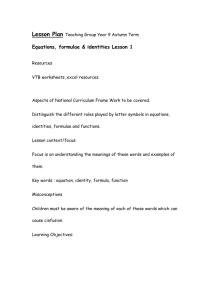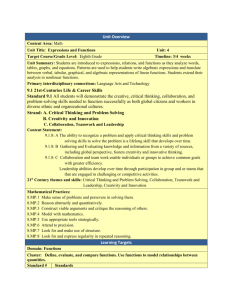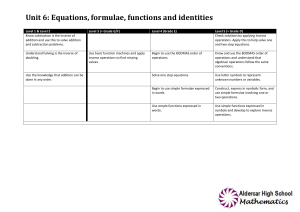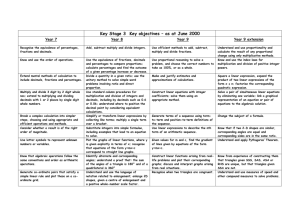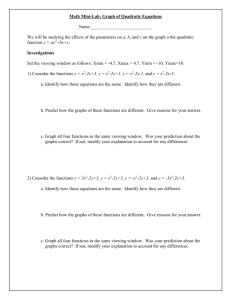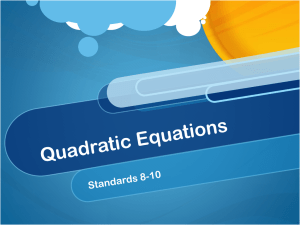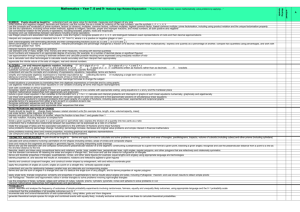APP Assessment criteria ALGEBRA Class__________ Mathematics
advertisement
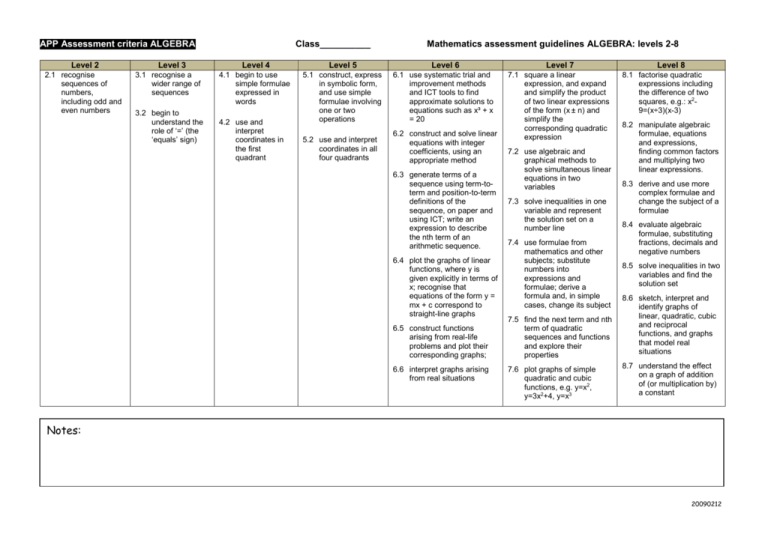
APP Assessment criteria ALGEBRA Level 2 2.1 recognise sequences of numbers, including odd and even numbers Level 3 3.1 recognise a wider range of sequences 3.2 begin to understand the role of ‘=’ (the ‘equals’ sign) Class__________ Mathematics assessment guidelines ALGEBRA: levels 2-8 Level 4 Level 5 Level 6 Level 7 4.1 begin to use simple formulae expressed in words 5.1 construct, express in symbolic form, and use simple formulae involving one or two operations 6.1 use systematic trial and improvement methods and ICT tools to find approximate solutions to equations such as x³ + x = 20 5.2 use and interpret coordinates in all four quadrants 6.2 construct and solve linear equations with integer coefficients, using an appropriate method 7.1 square a linear expression, and expand and simplify the product of two linear expressions of the form (x ± n) and simplify the corresponding quadratic expression 4.2 use and interpret coordinates in the first quadrant 6.3 generate terms of a sequence using term-toterm and position-to-term definitions of the sequence, on paper and using ICT; write an expression to describe the nth term of an arithmetic sequence. 6.4 plot the graphs of linear functions, where y is given explicitly in terms of x; recognise that equations of the form y = mx + c correspond to straight-line graphs 6.5 construct functions arising from real-life problems and plot their corresponding graphs; 6.6 interpret graphs arising from real situations 7.2 use algebraic and graphical methods to solve simultaneous linear equations in two variables 7.3 solve inequalities in one variable and represent the solution set on a number line 7.4 use formulae from mathematics and other subjects; substitute numbers into expressions and formulae; derive a formula and, in simple cases, change its subject Level 8 8.1 factorise quadratic expressions including the difference of two squares, e.g.: x29=(x÷3)(x-3) 8.2 manipulate algebraic formulae, equations and expressions, finding common factors and multiplying two linear expressions. 8.3 derive and use more complex formulae and change the subject of a formulae 8.4 evaluate algebraic formulae, substituting fractions, decimals and negative numbers 8.5 solve inequalities in two variables and find the solution set 7.5 find the next term and nth term of quadratic sequences and functions and explore their properties 8.6 sketch, interpret and identify graphs of linear, quadratic, cubic and reciprocal functions, and graphs that model real situations 7.6 plot graphs of simple quadratic and cubic functions, e.g. y=x2, y=3x2+4, y=x3 8.7 understand the effect on a graph of addition of (or multiplication by) a constant Notes: 20090212
